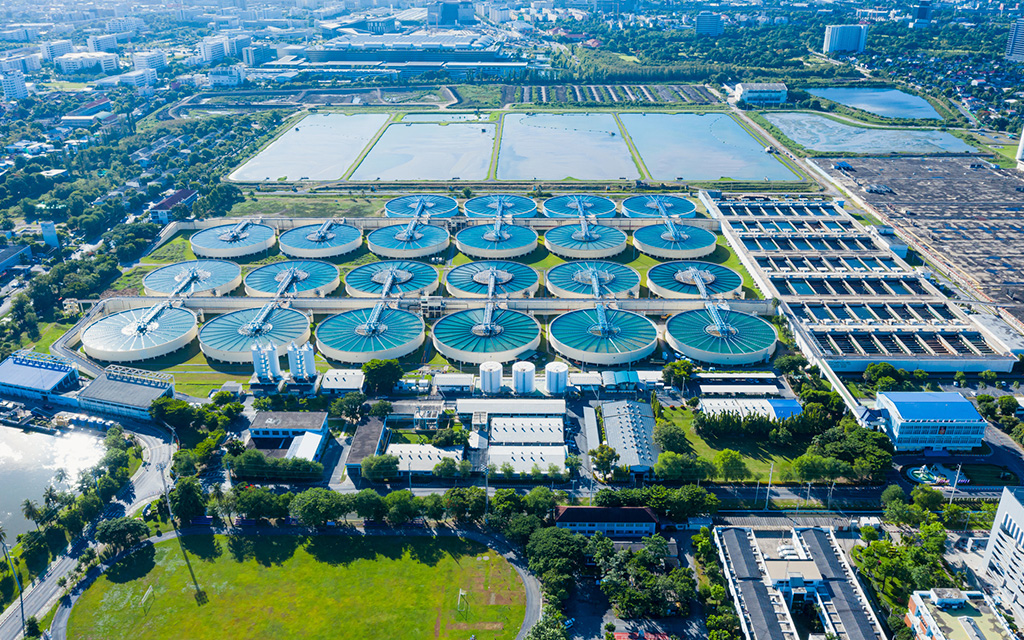As water quality faces increasing threats from emerging pollutants, the NIAGARA Project is working on advanced solutions to improve the ability of drinking water treatment plants to detect and eliminate chemical and biological contaminants, protecting public health and the environment.

As reported in the 2021 World Water Development Report published by UNESCO, the global use of freshwater has increased over six-fold in the last hundred years. With the increase of water consumption, water quality is facing severe challenges [1]. Industrialization, agricultural production, and urban life have degraded and polluted the environment posing significant threats and damage to the water bodies (rivers and oceans) necessary for life directly affecting human health and sustainable development. Notably, the last European Water Report found that around 40 % of surface waters (rivers, lakes and transitional and coastal waters) are in good ecological status or potential, and only 38 % are in good chemical status [2].
In this context, Drinking Water Treatment Plants (DWTPs) are key components of a defense system that is intended to eliminate harmful substances from our water consumption. Unfortunately, DWTPs will be subject to difficulties within water treatment that may affect their operational capacity, including emerging pollutants such as pharmaceuticals and industrial chemicals, nano/microplastics presence, the formation of certain organic compounds during disinfection processes, a lack of analytical tools to real-time monitoring of water contaminants and insufficient management actions to address water pollution comprehensively.
The NIAGARA Project attempts to help DWTPs overcome these challenges through the innovation and application of new solutions targeted to improve the capabilities of DWTPs to monitor and remove chemical and biological contaminants from drinking water. This section will describe a brief overview of NIAGARA approaches to tackle these issues:
Multi-analyte Biosensors for Reliable Monitoring
The NIAGARA Project is currently pursuing the development of Multi-analyte Biosensors to facilitate monitoring of multiple water contaminants by DWTPs. These biosensors will target emerging water pollutants including those released from everyday plastic products (Bisphenol A), sewage systems (Helicobacter pylori), agricultural run-off (imazalil), and commonly used medications (ibuprofen/paracetamol). Once biosensors are incorporated into water treatment processes, this sensor data will be invaluable to DWTPs for recognizing early signs of contamination
Innovative Enzymatic Degradation for Pollutant Removal
The project also includes the design of an Immobilized Enzymatic Degradation System (IEDS). The IEDS will focus on the degradation of chemical pollutants and pathogens, targeting the same four emerging pollutants. The enzymatic degradation approach offers a more sustainable, chemical-free solution to water decontamination, providing a cleaner and safer alternative to conventional methods.
Advanced UV/TiO2 Photocatalysis for Disinfection
Disinfection is a critical step in decontaminating water, but current methods can lead to harmful Disinfection By-Products (DBPs). NIAGARA is evaluating a safer and more efficient disinfection method utilizing UV/TiO2 photocatalysis. UV/TiO2 photocatalysis is expected to ensure that limited DBP's are formed while concurrently removing contaminants.
Combining the Solutions
Another innovation within NIAGARA project is the integration of IEDS with the UV/TiO2 photocatalysis system. This tandem approach will be tested at pilot level (TRL 5). These tests will validate the effectiveness of these combined systems in removing chemical and biological pollutants while adhering to safety and sustainability standards.
Real-Time Risk Management
NIAGARA is also developing a hydraulic model based on Smooth Particle Hydrodynamics (SPH). This model will use real-time data from the Multi-analyte biosensors to predict the spread of pollutants and unregulated DBPs within the drinking water distribution network in Valencia, Spain. This real-time predictive capability will empower water treatment facilities to proactively respond to potential risks, ensuring continuous water distribution safety.
Sustainability
Sustainability is a major focus of NIAGARA. As part of the overall execution of the project, NIAGARA will perform an environmental Life Cycle Assessment (LCA), Life Cycle Costing (LCC) and Social Life Cycle Assessment (S-LCA) to ensure that methods and processes are sustainable and cost-effective.
The growing contamination of water sources presents a major challenge for human health and sustainability of the environment, however, NIAGARA offers an opportunity to push past the limits of existing water treatment methods by delivering innovative solutions for monitoring, disinfection, and real-time risk management.
References:
- [1] United Nations, The United Nations World Water Development Report 2021: Valuing Water. UNESCO, Paris.
- [2] European waters. Assessment of status and pressures 2018. EEA [online]
Authors: María Cámara (KNEIA), Jaume Cotolí (EMI),Anastasia Perouli (ART).